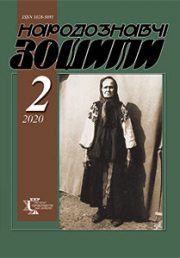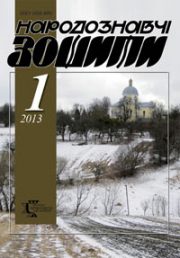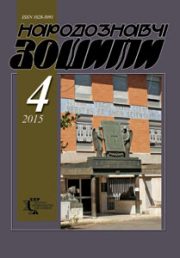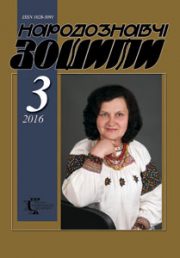The Ethnology Notebooks. 2017, 6 (138), 1591—1600
UDK 75.03 (520)
DOI https://doi.org/10.15407/nz2017.06.1591
Received 12.12.2017
NOH THEATRE IN RITUAL AND ARTISTIC PRACTICES OF MODERN JAPANY
Rybalko Svitlana, PHD in Art Studies, professor, Head of the Department of Art, Literary Studies and Linguistics of the Kharkiv State Academy of Culture
Bursatskyi uzviz, 4, Kharkiv, 61057, Ukraine,
Contacts: Tel. (057) 7311385; e-mail: rector@ic.ac.kharkov.ua
Abstract. Ritual and artistic components of Japanese Noh theatre are pointed out in the article. Means of preserving and handing down of this unique cultural tradition, actions to promote Nogaku art in Japan and in the world are highlighted. The role of Noh theatre in the dialogue of cultures is emphasized. International programs on the study of Nogaku art are highlighted.
Keywords: Noh theatre, Japanese culture, traditional theatre, Japanese art, ritual, dialogue of cultures.
REFERENCES
Anarina, N.G. (1984). Japonskij teatr no. Moskva : Nauka [in Russian].
Anarina, N.G. (2003). Sakral’naja telesnost’ japonskoj hudozhestvennoj veshhi. In N.G.Anarina & E.M.D’jakonova (Eds.), Veshh’ v japonskoj kul’ture (pp. 185—201). Moskva : Vostochnaja literatura [in Russian].
Dzjeami, M. & Anarina, N. (Ed.) (1989). Predanie o cvetke stilja (Fusi kadjen) ili Predanie o cvetke (Kadjensjo). Moskva : Nauka [in Russian].
Salz, J. (Ed.). (2016). A History of Japanese Theatre. Cambridge : University Press.
Ernst, E. (1969). The Influence of Japanese Theatrical Style on Western Theatre. Educational Theatre Journal, 21 (2), 127—138.
Cavaye Ronald, Griffith Paul, Senda Akihiko & Nomura Mansai. (2004). A Guide to the Japanese Stage: from Traditional to Cutting Edge. Tokyo : Kōdansha.
Grossman, E. (2008). Under the Burden of Nô: Community Life in Kurokawa and the Ritual Nō Performances. In S. ScholzCionca & Ch. Balme (Eds.), Proceedings of the International Symposium «Nō Theatre Transversal. Crossing Borders between Genres, Cultures and Identities» (pp. 49—65.). München : Iudicium.
ScholzCionca, S., Leiter, S.L. (Eds). (2000). Japanese theatre and the international stage. Leiden: Brill Academic Pub.
Leiter, S.L. (2006). Historical Dictionary of Japanese Traditional Theatre. Lanham; Maryland; Toronto; Oxford : The Scarecrow Press.
Malm, W. (2000). Nōgaku, the Music of Noh Drama. In Traditional Japanese music and musical instruments (pp. 119—148). USA : Kodansha.
Merrit, H., Yamada, N. (1975). Guide to Modern Japanese Prints: 1900—1975. Honolulu: University of Hawai’i Press.
Pate, A.S. (2008). Japanese dolls: The fascinating world of ningyo. Tokyo : Tuttle publishing.
Shaap, R., Rimer, Th. (2010). The Beauty of Silence: Japanese No and Nature Prints by Tsukioka Kogyo 1869—1927. Leiden : Hotei Publishing.
Shinichi, S. (1985). Yoshitoshi: the Splendid Decadent. Tokyo : Kodansha.
Takanori, F. (2008). Nō and Kyōgen: music from medieval theatre. In A. Tokita, D.W. Hughes (Eds.), The Ashgate research companion to Japanese music (pp. 127—144). Farnham : Ashgate Publishing.
Tyler, R. (1987). Buddhism in Noh. Japanese Journal of Religious Studies, 14 (1), 19—52.
Yamagata Kurokawa Noh. Retrieved from http://www.lifebeyondtourism.org/istituzione/577/YamagataKurokawanoh (Last accessed: 19.09.2017)
Yamaguchi Yasujiro. Epizode 2: Various chants of Nogaku. Retrieved from http://www.thenoh.com/en/people/sasaeru/007_episode2.html (Last accessed:04.10.2017)







